Albino ball pythons are more than just a striking visual spectacle; they’re a blend of nature’s wonder and unique care requirements.
Albino ball pythons consume rodents, with a preference for mice and rats. In the wild, their diet might also include shrews, voles, and occasional birds. In captivity, they’re typically fed mice or rats, either live or frozen-thawed, depending on the owner’s choice and the snake’s preference.
In this comprehensive guide, we’ll delve into the captivating world of these snakes, exploring their dietary habits, origins, health concerns, and much more.
From understanding the genetic marvel behind their albinism to practical tips on handling and interaction, we’ve analyzed every facet to give you a holistic view of these mesmerizing creatures.
Dive in to unravel the mysteries of the albino ball python!
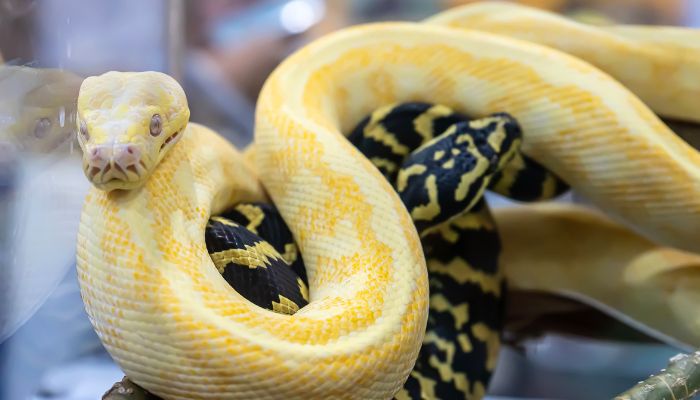
Table of Contents
Feeding Albino Ball Pythons
Beyond the striking looks of an albino ball python, there’s a common question that many potential snake owners ask: “What do albino ball pythons eat?” Let’s dive deep into the dietary habits of these unique creatures.
Typical Diet: Mice, Rats, Shrews, Voles, and Occasional Birds
At the core of an albino ball python’s diet are rodents. These snakes have a particular fondness for mice and rats. In the wild, their diet might also include shrews, voles, and even the occasional bird.
But for those in captivity, a steady diet of mice and rats usually does the trick. Think of it like this: if the albino ball python were to dine out, rodents would be their favorite restaurant!
Feeding Frequency and Size of Prey
Now, you might be wondering, “How often should I feed my albino ball python?” Well, these snakes aren’t daily diners.
Depending on their age and size, feeding them once every 5-14 days is the general rule of thumb. For instance, a young python might eat more frequently, say every 5-7 days, while an adult might only be hungry every 10-14 days.
And when it comes to the size of the prey, a good guideline is to offer prey that’s roughly the same width as the thickest part of the snake. It’s like us humans not biting off more than we can chew!
The Choice Between Mice and Rats, and Between Live and Frozen Prey
The great debate in the snake world: mice or rats? And should they be live or frozen? Let’s break it down. Rats tend to be larger and a bit leaner than mice, making them a hearty meal for bigger pythons. Mice, on the other hand, are often more readily available and can be a good choice for younger, smaller snakes.
Now, the live vs. frozen debate. While live prey might seem like a more “natural” choice, there are risks involved. Live rodents can bite and injure a snake. On the flip side, frozen prey, when properly thawed, offers a safer and equally nutritious option. Plus, it’s like having a freezer full of ready-to-eat meals!
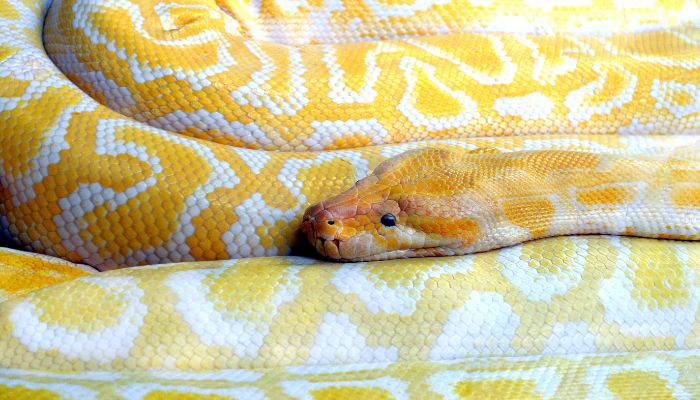
All About Albino Ball Pythons
Origin and Popularity in the Pet Trade
Albino ball pythons are not just another snake; they carry a rich history and a captivating allure. Originating from West Africa, ball pythons began making waves in the pet trade around the 1980s.
Initially, the wild-type ball python, with its light brown hue, darker brown or black markings, and black eyes, was the most sought-after. But then, the albino morph entered the scene, turning heads with its stark white body, contrasting yellow markings, and mesmerizing pink or red eyes.
Challenges in the Wild
But life isn’t all rosy for the albino morphs in the wild. Their bright coloring, while stunning, makes them easy targets for predators. Camouflage? Not their strong suit. Moreover, their unique appearance, a result of a lack of melanin, makes them more susceptible to health issues, especially concerning their eyes.
Lifespan and Health in Captivity
However, in captivity, these challenges are mitigated. With proper care, albino ball pythons can lead long, healthy lives, often reaching up to 30 years!
Their potential health problems, like sensitivity to light, can be managed, ensuring they thrive and mesmerize snake enthusiasts for years to come.
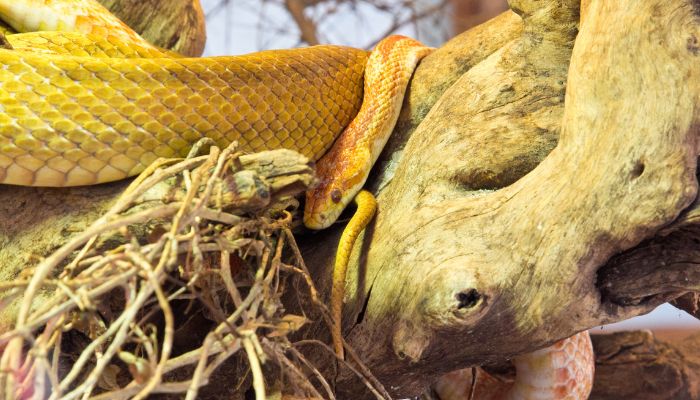
What Makes Albino Pythons Special?
The Genetics of Albinism
Albinism in snakes, like in many other animals, is a genetic phenomenon. It’s caused by a lack of melanin, the pigment responsible for color in skin, hair, and eyes. This absence results in the albino python’s iconic white body and pink or red eyes.
Sensitivity to UV Rays
One of the most significant challenges these pythons face is their sensitivity to UV rays. Just as some of us might need extra sunscreen on a sunny day, albino pythons need protection from direct sunlight.
Their lack of melanin makes them particularly vulnerable to the harmful effects of UV rays. In captivity, this means special care, like avoiding UVB bulbs, is essential to ensure their well-being.

Health Concerns and Issues
Sensitivity of Their Eyes to Light
One of the most distinctive features of albino ball pythons is their captivating pink or red eyes. However, this beauty comes with a vulnerability. Due to the lack of melanin, their eyes are particularly sensitive to light.
Prolonged exposure to bright lights can cause discomfort and even damage. In captivity, it’s essential to ensure their enclosure doesn’t expose them to direct, intense lighting.
Common Health Issues
Like all reptiles, albino ball pythons can face certain health challenges. Mites are tiny external parasites that can infest a snake’s skin, causing irritation and stress.
Respiratory infections, often signaled by wheezing or mucus around the nostrils, can be a result of improper humidity levels. Another concern is mouth rot, an infection in the mouth that can lead to swelling and a foul odor.
Signs of a Healthy Snake vs. Symptoms of Sickness
A healthy albino ball python will have clear eyes (apart from the natural pink or red hue), smooth skin, and a strong appetite.
They’ll be active, especially during their typical active hours. On the flip side, a lethargic snake, refusal to eat, irregular shedding, or visible wounds can be indicators of underlying health issues. Regular check-ups and keen observation are key to ensuring their well-being.
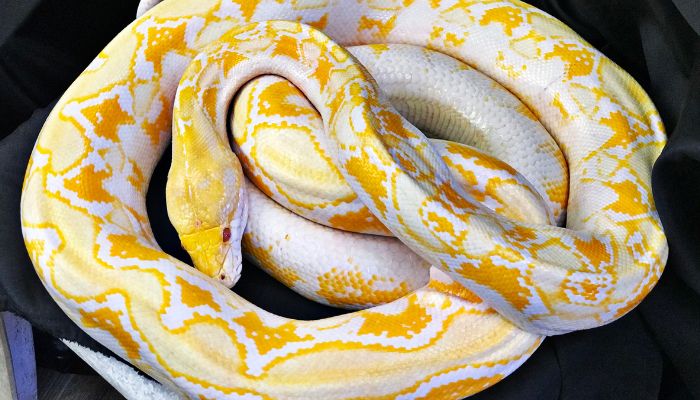
Handling and Interaction
Their Docile Nature
Albino ball pythons are known for their calm and docile temperament. They’re often considered one of the best snake breeds for beginners due to their gentle nature. But, like all animals, they have their boundaries.
Tips for Safe Handling
Always approach your python slowly and calmly, avoiding sudden movements. It’s best to handle them during their active periods and avoid disturbing them right after they’ve eaten.
When picking them up, support as much of their body as possible, ensuring they feel secure.
Using Tools Like Snake Hooks
While albino ball pythons are generally calm, tools like snake hooks can be beneficial, especially for larger snakes or those not used to handling.
A snake hook allows you to gently lift and move the python without using your hands, minimizing stress for both you and the snake. It’s a handy tool to have, even if you don’t use it every time.
Take Away
You’ve journeyed through the intriguing world of albino ball pythons, uncovering their dietary habits, unique characteristics, and care requirements.
These snakes, with their mesmerizing appearance and gentle nature, are truly a marvel of nature. As you consider diving deeper into the realm of reptile care, remember that knowledge is your best tool.
With the insights you’ve gained, you’re well-equipped to provide the best care for these captivating creatures. Embrace the adventure and cherish every moment with your scaly companion!
FAQ
How do you feed an albino ball python?
First, choose the appropriate size of rodent, typically a mouse or rat, depending on the snake’s size. If you’re using frozen prey, ensure it’s fully thawed and warmed to room temperature. Using tongs or a snake hook, present the rodent to the python, mimicking the movement of live prey. Your python should strike and constrict the prey before consuming it.
How often do albino ball pythons eat?
The frequency of feeding depends on the python’s age and size. Younger pythons might eat every 5-7 days, while adults typically eat every 10-14 days. Always monitor your snake’s weight and adjust feeding frequency as needed.
What do albino ball pythons need?
Albino ball pythons require a secure enclosure with appropriate heating and humidity levels. They need hiding spots, a water dish, and a substrate like aspen shavings. Regular feeding with the right-sized prey and occasional health check-ups are also essential.
How long can an albino ball python go without food?
While it’s not ideal, an albino ball python can go without food for several weeks to a few months, depending on its health and age. However, prolonged fasting can be a sign of underlying health issues, so it’s essential to consult a veterinarian if your snake refuses to eat for an extended period.

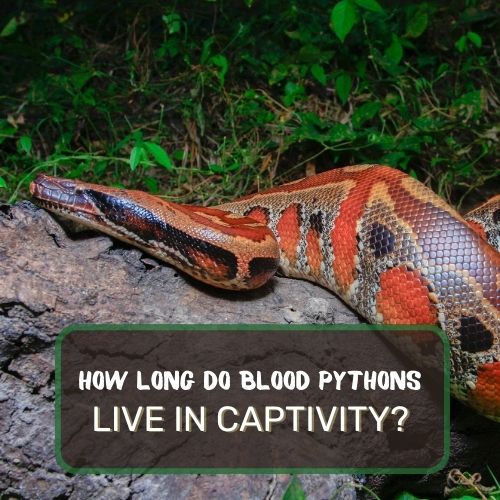
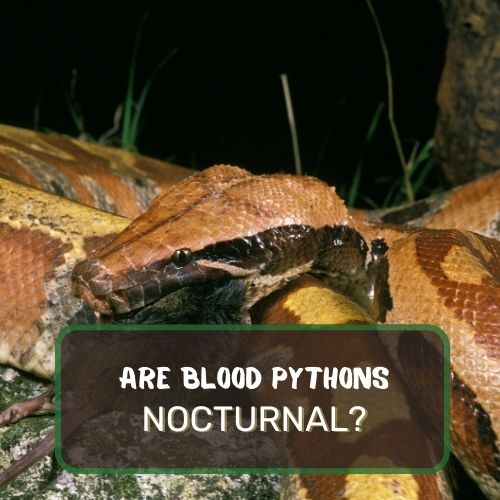

0 Comments